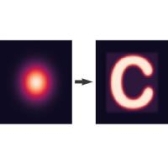


A Spatial Light Modulator (SLM) is an optical device that dynamically manipulates the properties of light—typically its phase, amplitude, or polarization—across a two-dimensional plane. It consists of a pixelated array (often based on liquid crystals or micromirrors) that allows for the precise shaping of wavefronts.

SLMs are used in a wide range of applications, including:
In phase-only SLMs (most commonly liquid crystal-based), the phase of incoming light is modulated pixel-by-pixel by controlling the refractive index via applied voltage.
For advanced computational methods—such as wavefront reconstruction, digital holography, or SLM calibration—the accuracy of light field measurements is crucial. Coverglass layers on standard sensors can introduce uncontrolled phase shifts, internal reflections, and dispersion effects. These artifacts distort the wavefront and compromise the reliability of the recorded intensity or interference patterns. When developing algorithms that rely on phase-sensitive detection or inverse light propagation models, as at the Hogan Lab at Stanford University, even sub-wavelength inaccuracies can lead to significant errors.
By using coverglass-free (bare-die) sensors, these unwanted optical effects are eliminated, enabling:
You can find further information about how to determine an appropriate SLM phase in the following theory paper:
High-fidelity holographic beam shaping with optimal transport and phase diversity.
The Hogan Lab at Stanford University, led by Prof. Jason Hogan, focuses on atom interferometry to explore fundamental physics—such as testing general relativity, searching for dark matter, and detecting gravitational waves.
A key aspect of their work involves Spatial Light Modulators (SLMs), which they use to precisely shape laser beams that interact with ultracold atoms. This beam shaping is critical for:
They have contributed to developing holographic techniques with SLMs to create highly stable and flexible light fields, enabling more accurate manipulation of atomic trajectories. This work is foundational for large-scale projects like MAGIS-100, a 100-meter atom interferometer aiming to detect mid-frequency gravitational waves and probe new physics.
Their research highlights the importance of advanced photonic control—such as that offered by high-resolution SLMs—in pushing the frontiers of quantum sensing and fundamental measurements.
For more details, please visit the website of the Hogan Lab at Stanford University..
Here you can easily ask a question or inquiry about our products:
Last update: 2025-17-04
